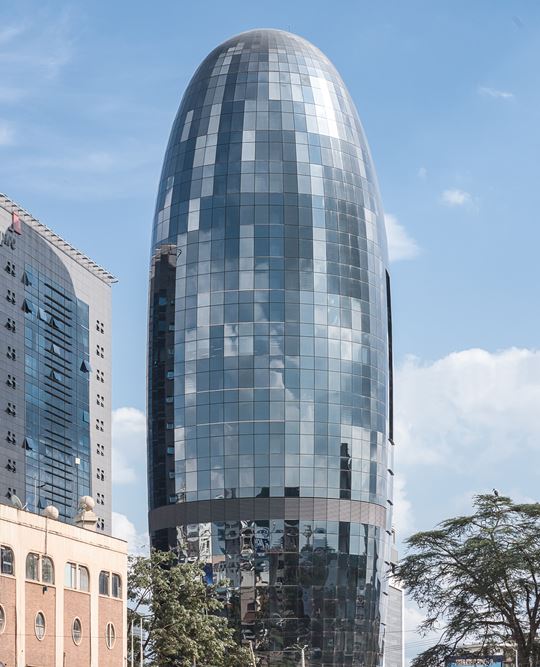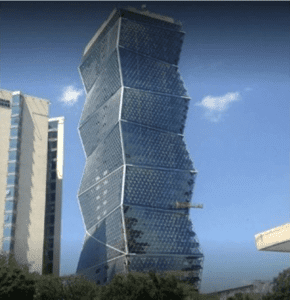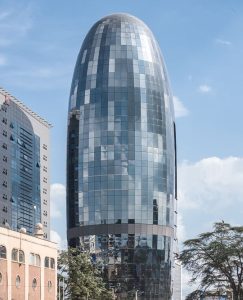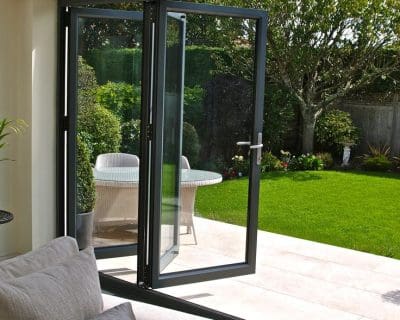
Nairobi is transforming. Gleaming skyscrapers are piercing the sky, and at the forefront of this architectural revolution is the extensive use of glass. These modern marvels not only redefine the city’s aesthetic but also showcase the potential of glass in contemporary construction.

The crown jewel of Kenya’s glass giants is the Britam Tower, holding the title of the tallest building in the country at an impressive 200 meters. Completed in 2018, this 31-storey behemoth boasts a distinctive prismatic design clad in shimmering glass.
Following closely behind is the Prism Tower, another architectural marvel reaching 133 meters. This 34-story tower, finished in 2018 as well, features a captivating design that resembles prisms stacked upon one another, creating a dazzling play of light with its extensive glass facade.

These towers are not just architectural feats; they are testaments to the durability of modern glass. While Kenya’s glass giants are relatively young, modern architectural glass is engineered to withstand the elements for decades. Special coatings and treatments protect against harsh sunlight and UV rays, ensuring the building’s structural integrity and visual brilliance for years to come.
why is glass such a vital component in these Kenyan towers?
Abundant Natural Light: Glass facades bathe interiors in natural light, reducing reliance on artificial lighting and creating a more energy-efficient environment.
- Breathtaking Views: Floor-to-ceiling windows offer panoramic vistas of the city, enhancing the occupant experience and creating a sense of openness.
- Modern Aesthetic: Glass and aluminium structures embody a sleek, modern aesthetic that elevates the visual appeal of the cityscape.
- Sustainable Potential: Modern glass can be surprisingly energy-efficient, with advancements in insulation and solar control properties.
Kenya’s glass giants are more than just symbols of progress; they are testaments to the innovative use of glass in shaping the future of African architecture. As the skyline continues to evolve, one thing remains certain: glass will keep playing a vital role in creating not only functional but also aesthetically captivating landmarks.
The Future of Glass in Kenyan Architecture, with TSL Industries Leading the Charge
While the Britam Tower and Prism Tower are the current champions, Kenya’s foray into glass architecture is far from over. Several ambitious projects like One Africa Place in westlands are on the horizon, pushing the boundaries of design and functionality. Kenyan frontrunners like TSL Industries are at the forefront of making such aspirations possible.

Here’s a glimpse into what the future holds:
- Sustainable Innovations: As Kenya strives for a greener future, architects are exploring eco-friendly glass solutions. Self-cleaning glass with special coatings can minimize maintenance needs and water usage. Additionally, advancements in solar control glass can potentially regulate interior temperatures, reducing reliance on air conditioning and lowering energy consumption.
- Smart Building Integration: The future of glass goes beyond aesthetics. Imagine glass facades that integrate smart sensors to regulate natural light and interior climate. This integration with building management systems can optimize energy use and create a more responsive and comfortable work environment.
- Community and Collaboration: Large-scale glass buildings have the potential to foster a sense of community and collaboration. Transparent lobbies, atriums, and walkways can create a more open and inviting atmosphere, encouraging interaction and exchange of ideas.
The durability of Modern Glass Buildings
While the breathtaking glass facades of Kenya’s skyscrapers steal the show, their longevity is equally impressive. Modern architectural glass is engineered to withstand the elements for decades, often exceeding 70 years. Special coatings and treatments shield the glass from harsh sunlight and UV rays, preserving the building’s structural integrity and visual brilliance. This extended lifespan makes glass a cost-effective and sustainable choice, reducing the need for frequent replacements and contributing to a city’s enduring character. Of course, regular maintenance is crucial to ensure optimal performance, but with proper care, these glassy giants can continue to dominate the skyline for generations to come.
Conclusion
Kenya’s glass giants are a stepping stone, a testament to the country’s commitment to innovation and progress. TSL Industries, as a leading force in the Kenyan glass Industry and fabricator of glass, is poised to be a major contributor to this exciting journey. As architects, engineers, and material scientists continue to push the boundaries of what’s possible with glass, we can expect to see even more awe-inspiring and sustainable structures grace the Kenyan skyline in the years to come.
This continued exploration of glass in Kenyan architecture presents exciting possibilities. Not only will it redefine the aesthetics of cities, but it also has the potential to contribute to a more sustainable and collaborative future for the nation. The future of Kenyan architecture is undoubtedly bright, and glass is sure to play a starring role in this ongoing story, with TSL Industries likely to be a key player in shaping this future.





